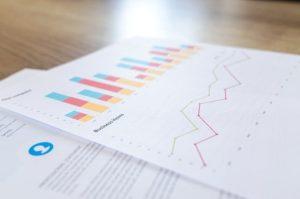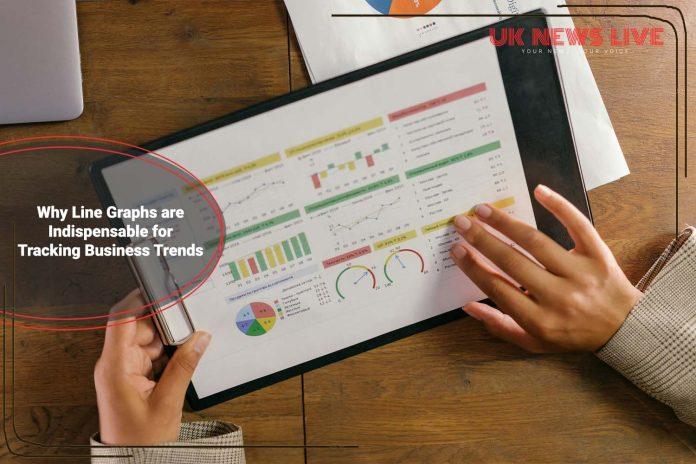Line graphs are essential for tracking business trends.
Their clear visual representation makes it easy to spot patterns and understand how key metrics are changing over time.
This simple yet powerful tool offers several advantages for businesses seeking to analyze and interpret their data.
Let’s take a look.
They Are a Powerful Data Comparison Tool

Often, it is not enough to only plot one set of data you need to visualise. Sometimes, it is important to also compare two or more data types or sets. A line graph maker makes it easy to do this because you can plot multiple lines on the same graph and compare different data points.
Examples of areas where this use case applies include comparing the performance of different products or online shops, comparing income from different activities or regions, and comparing the performance of different departments.
When plotted properly and using the right data, a line graph can make it easy to see and track trends in many other areas of your business.
They Aid with Natural Pattern Recognition
Our brains are highly evolved to detect patterns, especially in continuous lines. When tracking different metrics like growth, customer acquisition rates, market share, revenue and others, line graphs leverage this innate ability to help us detect patterns in all these effectively.
The continuous nature of the lines on these types of graphs makes it easy to spot upward and downward trends, identify patterns, detect outliers and anomalies, and recognise correlations between different types of data.
That last use case is especially important when using a single line graph with multiple lines to visualise different sets of related data.
Line Graphs Make It Easy to Understand Time-based Trends

All business data is time-based. This means it is relevant for the periods it is collected and for similar periods in the future. Line graphs are great at helping business owners, leaders, digital marketers and other stakeholders understand time-based relationships and trends in different types of data.
This utility is especially useful in situations like quarterly sales analysis, daily website traffic tracking for ecommerce stores, and growth rate tracking.
The easy-to-understand visualisations that well-designed line graphs provide make it easy to compare data across time periods, identify periods of irregularity in metrics and performance indicators like sales, and help businesses understand which processes have the best returns or outcomes over time.
Line Graphs are (Almost) Infinitely Scalable
Every business owner understands the importance of being able to visualise and understand even the smallest details and data points. Line graphs can and do maintain their effectiveness across different data scales and timeframes.
For instance, a business can use a line graph to display micro-trends that occur hourly in one instance and macro-trends that appear monthly or annually in another.
They can also take a different approach and use a single line graph to zoom in on specific periods without losing context. While plotting a line graph to fit such a use case might require additional data, it has become much easier to do (including adding the relevant granular data) with the help of an online line graph maker.
Line Graphs are Excellent Presentation Tools

Understandably, many people do not like presentations. There are several reasons for this, ranging from being boring to stakeholders not understanding the data being presented in the way the presenter intends.
Line graphs can solve this issue when plotted properly with the right data and designed well.
They can provide immediate visual impact during presentations because they are incredibly easy to understand and follow once the observer understands the axes.
Their utility as presentation tools is also due to their excellent storytelling ability. This ability to show progression over time allows even those who do not understand the underlying data to follow them.
Line graphs can also work well in different settings. For example, one manager can include them in detailed reports, while another can use them in quick dashboards to put a point across.
Lastly, line graphs maintain their utility over different sizes and presentation formats. The overall progression of a line graph doesn’t change, which makes it easy to understand regardless of where it is used.
A pie chart, for comparison, can be difficult to understand and interpret unless the observer takes a few minutes to understand the data it presents or what it is trying to say.
Line graphs have been around for a long time and have remained useful for several reasons. These include their ability to aid with pattern recognition, versatility, ability to showcase trends over time, and ability to help businesses track trends over time. Their ability to communicate complex data relationships while also remaining largely accessible to everyone is an additional reason why they remain an essential tool in business analytics and reporting.































